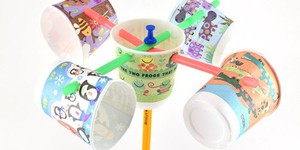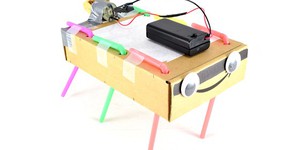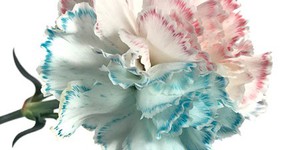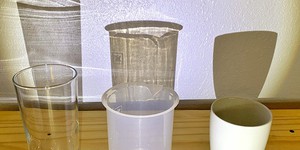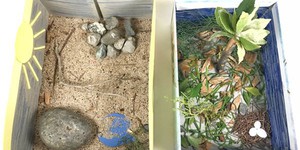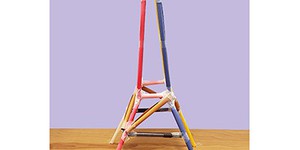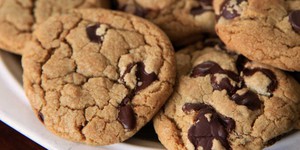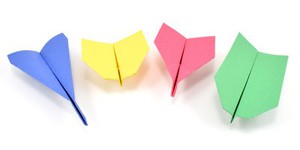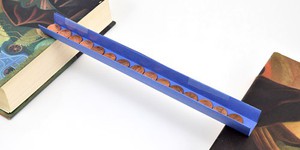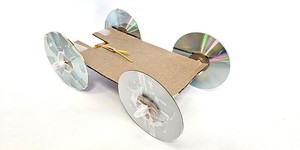Elementary School Lesson Plans (103 results)
Science Buddies' elementary school science projects are the perfect way for elementary school students to have fun exploring science, technology, engineering, and math (STEM). Our elementary school projects are written and tested by scientists and are specifically created for use by students in the elementary school grades. Students can choose to follow the science experiment as written or put their own spin on the project.
For a personalized list of science projects, elementary schoolers can use the Science Buddies Topic Selection Wizard. The wizard asks students to respond to a series of simple statements and then uses their answers to recommend age-appropriate projects that fit their interests.
|
Select a resource
Sort by
|
Lesson Plan
Grade: 3rd
14 reviews
Help the budding meteorologists in your classroom learn how to measure wind speed by building their own anemometers (wind speed meters) with paper cups and straws. Then do a simple experiment in which students change the "wind" speed using a fan and measure how fast their anemometer spins.
Read more
NGSS Performance Expectations:
Featured
Lesson Plan
Grade: 6th-8th
7 reviews
Junkbots are easy-to-build robots that you can make using a simple circuit and some recyclable materials. In this lesson, your students will learn about engineering design as they compete to build the fastest robot. No previous robotics experience is required!
Read more
NGSS Performance Expectations:
Lesson Plan
Grade: 2nd
5 reviews
Your students might know that plants need water to survive. But how does a plant "drink" and get water from the soil all the way up to its' leaves? In this lesson plan, students will observe how plants (flowers and celery) suck up dye-stained water, which makes the petals and leaves change color! This allows students to visualize the process of how water moves through a plant.
Read more
NGSS Performance Expectations:
New
Lesson Plan
Grade: 6th-12th
Create a two-part system for filtering greywater. Teams will focus on communication and systems engineering as they build separate components to filter solid and liquid waste and then combine them into one device.
Learning Objectives
Students will:
Consider the potential effects of drought and how greywater could be part of the solution.
Design a system for filtering out solid waste or liquid waste.
Consider effective communication strategies with their team.
Collaborate on their design…
Read more
Lesson Plan
Grade: 1st
12 reviews
In this lesson, students explore firsthand what transparent, translucent, and opaque mean, and how they are related to light. They will place a variety of materials in front of an illuminated object and predict if and how well they will be able to see the object through the material sheet. In doing that, students will realize that different materials allow different amounts of light to pass through.
Remote learning:
This lesson plan can be conducted remotely. The Engage section of the…
Read more
NGSS Performance Expectations:
Lesson Plan
Grade: Kindergarten-2nd
5 reviews
Get creative with your students in this hands-on lesson plan! Students will use mostly natural materials to build a shoebox habitat that mimics a real-life habitat for an animal of their choice. As they present their miniature habitats to each other, students realize that not all habitats are suitable for all animals. Each animal species needs the resources of a specific habitat to survive.
Read more
NGSS Performance Expectations:
Lesson Plan
Grade: 3rd-5th
5 reviews
Teach your students about the engineering design process with this fun lesson plan. They will design and build the tallest possible tower using nothing but paper and tape, but there's an additional twist on this classic activity. The tower must support a heavy weight at the top without collapsing! Teachers, note that middle school and high school versions of this lesson plan are also available. The 2021 Engineering Challenge is over, but you can still try this fun lesson with your students,…
Read more
NGSS Performance Expectations:
Lesson Plan
Grade: 4th-8th
3 reviews
The problems with using fossil fuels starts with extraction. In this activity, students "mine" chocolate chips out of cookies to demonstrate the effects mining can have on habitats.
Read more
NGSS Performance Expectations:
Lesson Plan
Grade: 5th
4 reviews
How do our everyday actions contribute to our ecological footprint? Can we change our individual actions to be more environmentally friendly and create a more sustainable lifestyle? In this lesson, students will evaluate their own environmental impact using an online tool called
Your Plan, Your Planet,
and evaluate simple ways to reduce their ecological footprint as an individual or community.
Read more
NGSS Performance Expectations:
Lesson Plan
Grade: 3rd-5th
18 reviews
Are paper airplanes a nuisance in your classroom? They don't have to be! Those distractions can be a constructive learning opportunity: use them to teach your students about the engineering design process. In this fun lesson, you will be the "customer" ordering a paper airplane, and your student teams will be engineering companies that will manufacture planes. Before they start making planes, they need to define the criteria and constraints of this engineering problem.
Read more
NGSS Performance Expectations:
Lesson Plan
Grade: Kindergarten-2nd
15 reviews
Your students have probably walked or ridden over a bridge at some point in their lives. In this engineering activity they will design and make bridges out of folded pieces of paper, and test how much weight they can hold with pennies. How does the shape of a bridge affect its strength? Let your students explore and find out with this lesson!
This lesson can be expanded to a second lesson looking at how the material a bridge is made out of can change its strength; see second lesson for details.
Read more
NGSS Performance Expectations:
Lesson Plan
Grade: 3rd-5th
10 reviews
In this fun engineering lesson plan, your students will build rubber band-powered cars using readily available craft supplies. The challenge is to build a car that goes as far as possible while making careful use of materials.
Middle school and
high school
versions of this lesson plan are also available. You can enter your students' designs in the 2024 Science Buddies Engineering Challenge for a chance to win a cash prize for your school.
Note for K-2 teachers: you can do this…
Read more
NGSS Performance Expectations:
|
Explore Our Science Videos
DIY Glitter Surprise Package with a Simple Circuit
Walking Water Experiment | STEM Activity
How to Make Slime

